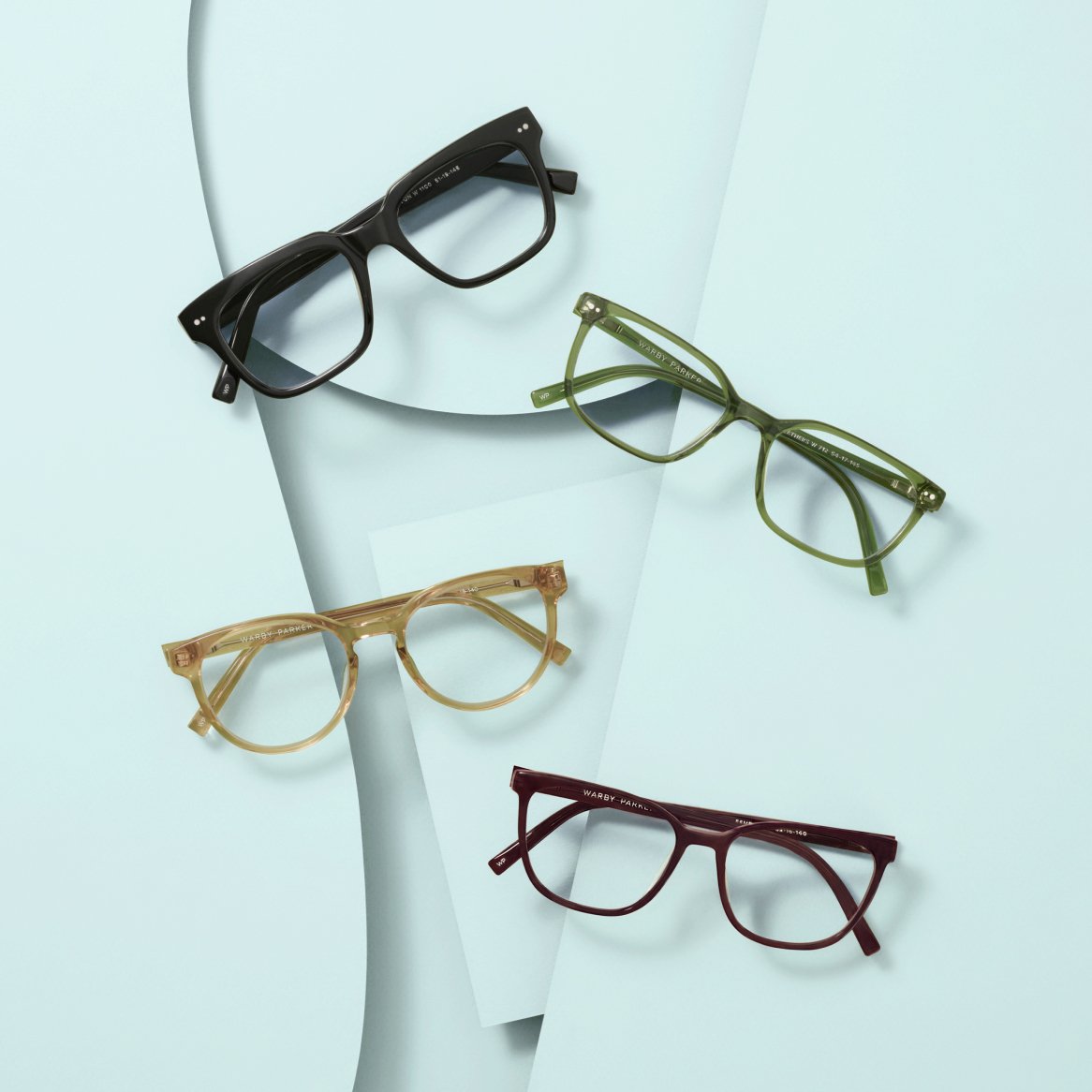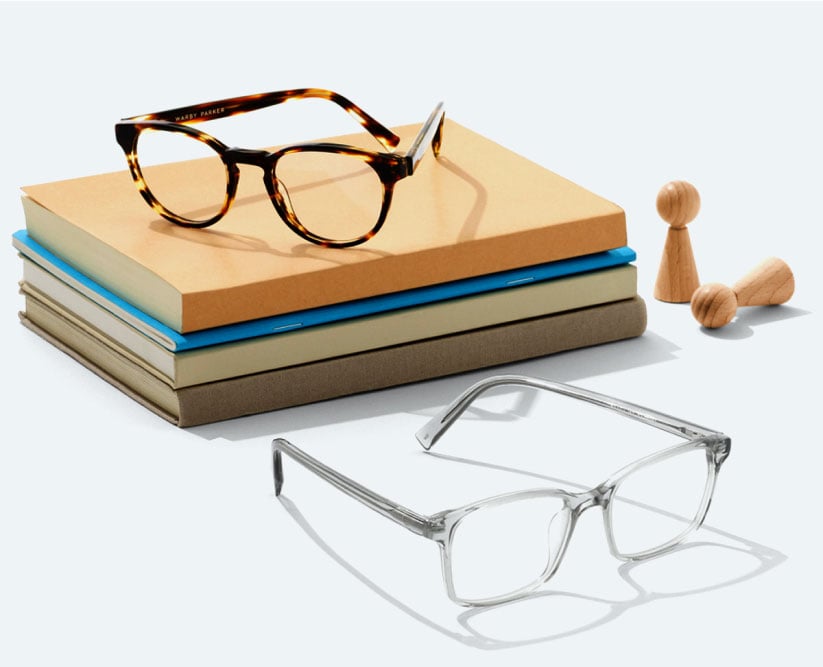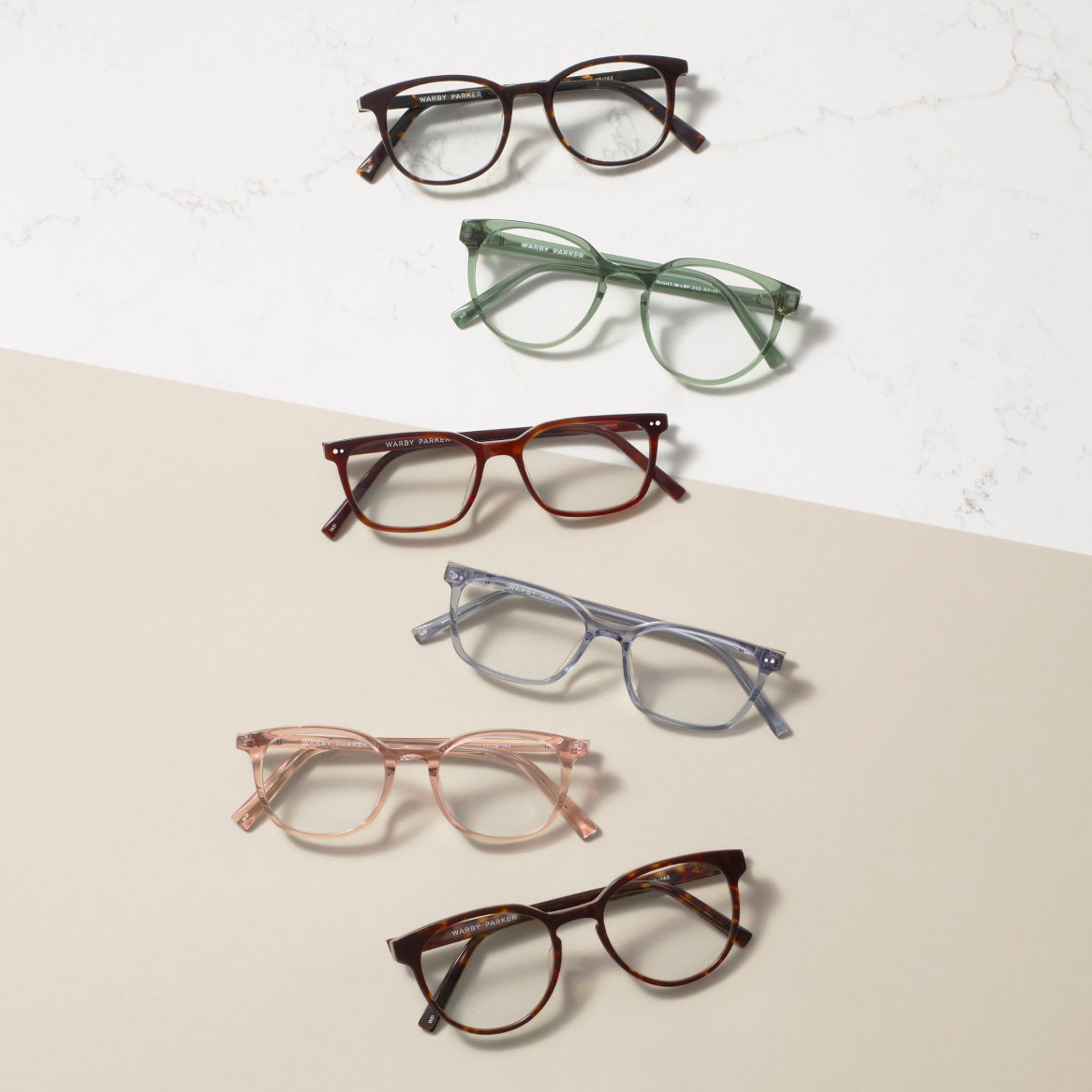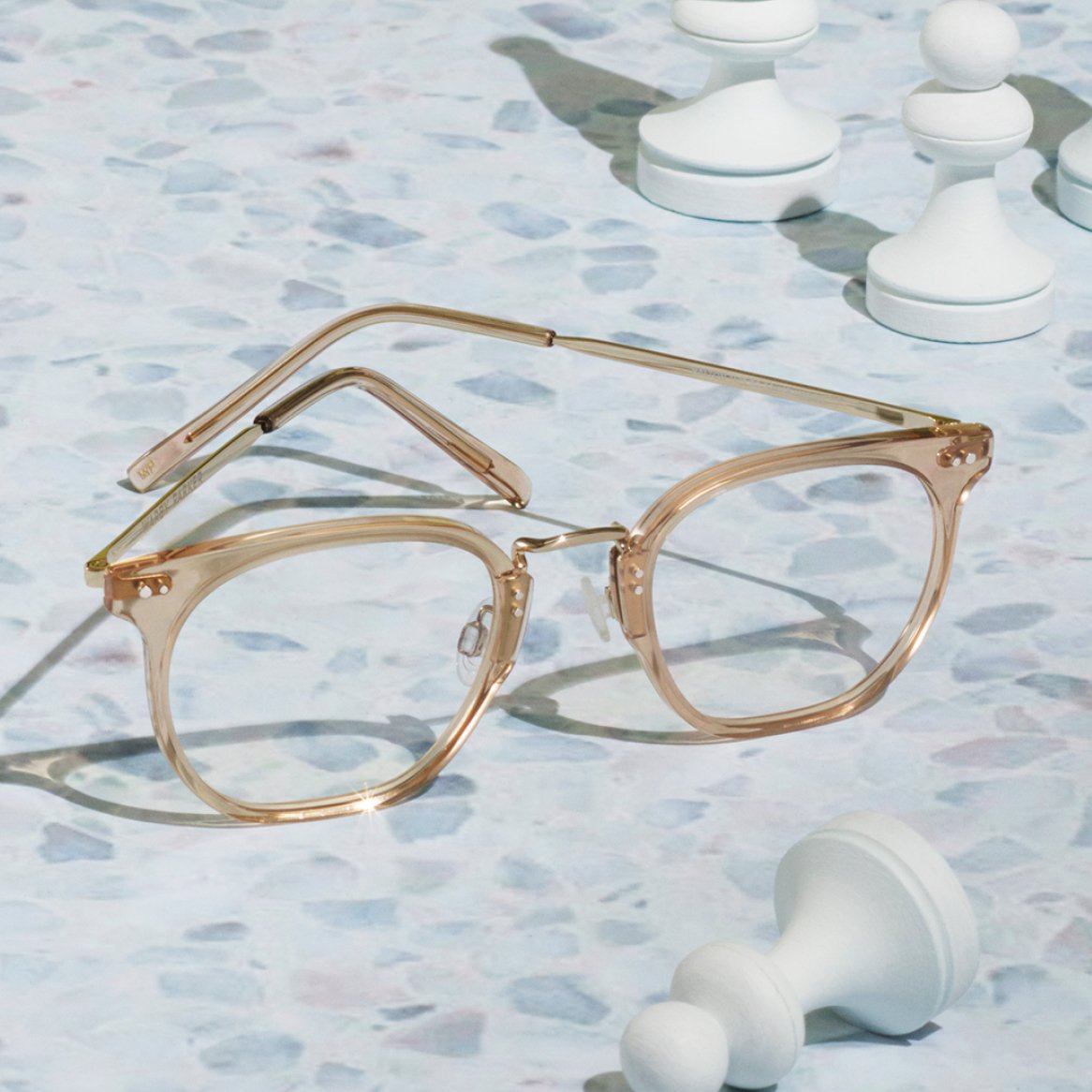The cost of prescription glasses depends on several factors, including the type of vision correction you need, lens coating and materials, the frames, quality, and what your vision insurance plan covers.
The out-of-pocket cost of glasses can range from less than $50 to more than $500, depending on those factors as well as markups added by the retailer. This usually doesn’t include the cost of an eye exam. But taking advantage of vision insurance benefits and other cost-saving moves can shave a significant amount off the bottom line.
In this guide, we’ll explain in more detail how common components influence the price of glasses. And we’ll give you hints on how to get quality eyeglasses at a lower price.
Factors That Influence the Cost of Prescription Glasses
What makes some glasses more expensive than others? Common factors that influence the price of glasses include lens type, lens material, lens enhancements like coatings or treatments, and frame material. Let’s take a look.
Lens Type
Your glasses contain prescription lenses that correct your vision. They have to be made to exact specifications according to the prescription and type or types of correction you need. In general, the more complex your vision needs are, the more complex—and expensive—the lens will be.
For instance, most people, such as those with refractive errors like myopia (nearsightedness) or hyperopia (farsightedness), need single-vision lenses to correct their eyesight at one distance.
Others, such as those with presbyopia, may need bifocal, trifocal, or progressive lenses to help them see at more than one distance. These multifocal lenses tend to be more expensive than single-vision lenses.
Some vision issues, such as strabismus, could require special eyeglass lenses like prism lenses, which also tend to be more expensive than simpler lenses.
Lens Material
Depending on your vision needs and lifestyle, you can choose from several safe, effective lens materials.
For example, polycarbonate lenses are thinner and lighter than “regular” CR-39 plastic lenses, which can be thick, depending on your prescription. Plus, polycarbonate lenses are impact-resistant and offer UV protection, which makes them great for kids and adults alike. Polycarbonate lenses are standard when purchasing Warby Parker glasses.
High-index lenses can be even thinner and lighter than most polycarbonate lenses. They’re the perfect option for those with strong prescriptions. But high-index lenses do tend to be a bit more expensive.
Lens Enhancements (Lens Coatings and Treatments)
Lens enhancements for glasses are coatings or treatments that add features to your lenses. They’re like extra trim options to soup up your car. Similarly, they can add dollars to glasses prices.
For glasses, these add-ons may include such lens choices as:
- Scratch-resistant treatment to guard against minor lens scratches and abrasions that can interfere with clear vision.
- Anti-reflective coating (anti-glare coating) to keep glare and distracting reflections at bay, such as when driving at night.
- Ultraviolet (UV)-blocking treatment to help shield your eyes from harmful UVA and UVB rays.
- Hydrophobic coating to repel moisture from your lenses.
- Light-responsive treatment to turn regular clear glasses into photochromic lenses that darken in UV light and return to clear when indoors.
- Polarized lens coating to make sunglasses less reflective and increase contrast.
- Blue-light-filtering coating to filter out blue light from screens—and the sun—which may improve your sleep cycle.
Some add-ons to your lenses can add to the cost of your glasses, depending on where you purchase them. Every pair of eyeglasses at Warby Parker includes scratch-resistant, anti-reflective, superhydrophobic treatments as well as UV protection at no extra cost. Sunglasses come with scratch-resistant and UV-blocking lens treatments, while prescription sunglasses come standard with polarization. These features might cost extra with other providers.
Frame Material
How eyeglass frames are made can contribute to the price of glasses. Popular materials for frames include:
- Plastic: Nylon glasses frames are bendy and impact-resistant, so they’re popular for sports. Acetate frames, on the other hand, may cost a touch more, but they’re often preferred thanks to their durable, long-lasting construction. Acetate frames are also hypoallergenic and tend to hold up to design-related treatments better than other lower-quality plastics, allowing for more diverse styling options.
- Metal: Stainless steel is a popular material for eyeglass frames, as it’s sturdy and relatively lightweight. Titanium frames are both stronger and lighter than stainless steel, and they’re hypoallergenic, costing a bit more as a result. Aluminum is another choice for high-quality metal frames that are flexible, yet durable, and corrosion resistant.
- Combined materials: Some frames have components made of different materials, such as plastic frames with a metal bridge. This is usually based on the design—semi-rimless glasses, for example, tend to require multiple materials by nature. These materials can vary, so prices do too.
Retailer markups
Certain retailers—a more traditional eye doctor, for example—may charge higher prices, as there’s often a “middle man” in the mix that supplies the frames. In certain cases, like with Warby Parker, you may be able to avoid these types of markups by purchasing directly from the frame designer (that’s us) while also saving via insurance and discounts.
How to Save Money on Prescription Eyeglasses
No matter what type of glasses you need or want, there are plenty of ways you can save money. These include using vision insurance benefits, paying with a health saving account (HSA) or flexible spending account (FSA), replacing only the lenses, bundling vision products when you purchase them, and utilizing assistance programs.
Use Your Vision Insurance
Depending on what your vision insurance covers, your out-of-pocket cost of eyeglasses could be reduced significantly, even to nil. Contact your insurance company to see what eyewear your policy covers.
Interested in using your insurance for your Warby Parker glasses? Check your benefits online or contact us for help. Even if we’re out of network, you may still be able to save.
Use Your HSA or FSA
If you have an HSA or FSA, you can likely save money by paying for your prescription glasses with pre-tax dollars. Prescription sunglasses, contact lenses, and eye exams are usually HSA- and FSA-eligible expenses. If you’re not sure if you have an HSA or FSA or what counts as an eligible expense, ask your employer or benefits plan administrator.
Replace Your Lenses
If you need a new prescription but your frames seem fine, you may be able to put new lenses in old frames. This way, you’re only paying for the lenses (which are often the most expensive part of the glasses) rather than the frames as well.
Warby Parker offers a one-time free lens replacement within the first six months of getting a new pair of glasses. After six months, there are some instances, like a prescription change, where we can extend a one-time lens replacement discount (starting at $35) towards the same pair of glasses or sunglasses.
However, it’s recommended to replace the frames along with your lenses whenever you need an updated prescription. Wear and tear on your frames isn’t always obvious. You may find yourself needing to replace only the frames in the near future. This could end up being more expensive than purchasing an entirely new pair of glasses (frames and lenses) in the first place.
Bundle Vision Products
Sometimes, retailers will offer deals when you purchase more than one product, like contact lenses and glasses. For instance, Warby Parker offers a $50 credit good toward a pair of glasses when you purchase an annual supply of contacts. Only need glasses? Bundle two pairs of prescription eyeglasses or sunglasses and get 15% off.
Seek Out Assistance Programs
For those with financial need, several programs are available to help with the cost of glasses. The National Eye Institute maintains a list of programs and resources for those needing financial assistance to obtain quality eye care and glasses.
Quality Glasses Are Worth the Money
While you can save money buying your new glasses, whether that’s online or at a brick-and-mortar optical shop, it’s a good idea not to skimp on them. High-quality glasses will last longer and will work properly, enhancing your vision and your enjoyment of life.
The good news? At Warby Parker, there’s no skimping necessary. Prescription glasses start at just $95 with plenty of ways to save, and we accept both vision insurance and FSA payments for your convenience.
Otherwise, if you’re looking to clip some dollars off the price of your glasses, your optician, optometrist or ophthalmologist can recommend which frame and lens material or features are imperative for your vision care and where you may be able to cut costs.





